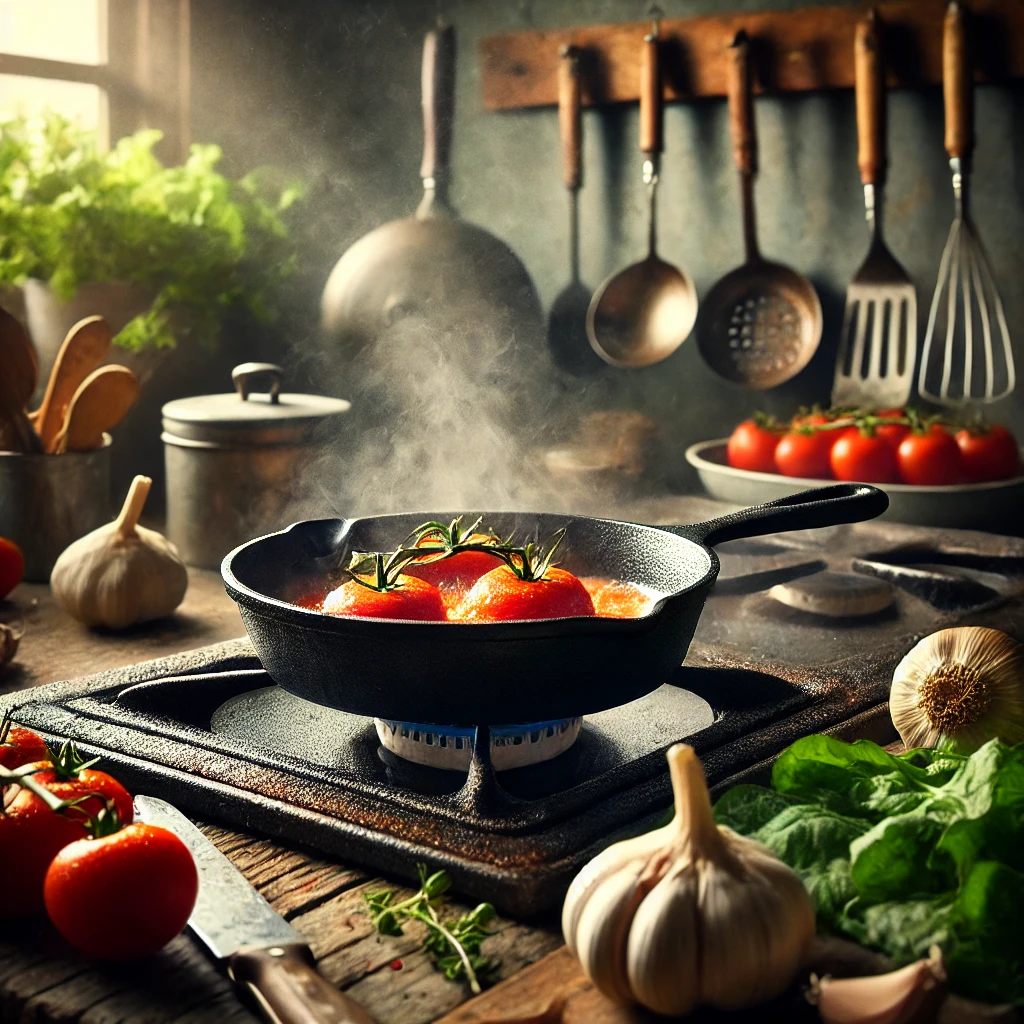The Iron Boost from Cast Iron Cooking
Yes, cooking using a cast iron skillet can somewhat boost the iron content of your food, which may contribute to higher iron levels. Here’s a rundown of what you should know.
Understanding Iron Leaching in Cast Iron Cookware
Cast iron cookware comprises iron, and a little can seep into food while cooking, particularly when using acidic substances. This progressive leaching process depends on cooking time, temperature, and food acidity.
Addressing Iron Deficiency Through Cookware
While the amount of iron leaking from cast iron is minimal, it can be a beneficial supplement for iron-deficient people. Even a small increase in iron intake may benefit individuals with low iron stores.
Limitations of Cast Iron as an Iron Source
Cast iron should not be regarded as a primary source of iron. The amount leached is tiny and will not fully correct an iron shortage. Not guaranteed: The amount of iron leaching will vary based on several circumstances. Additionally, some people may absorb iron less efficiently than others.
The Impact of Acidity on Iron Absorption
The pH of the food you cook in a cast iron pan can greatly impact how much iron leaches into the dish. Acidic foods, such as tomatoes, tomato sauce, or vinegar, are more reactive with cast iron, causing more iron to dissolve and be absorbed into the food.
The Chemistry Behind Iron Leaching
This is because the hydrogen ions found in acidic substances can interact with the iron in the skillet, removing the protective coating and exposing more of the metal to the meal. As a result, cooking with acidic components might increase the iron level of the dish more than cooking with neutral or alkaline ingredients.
Factors Affecting Iron Leaching
It’s worth mentioning that factors such as cooking time, temperature, and the state of the cast iron skillet can impact the amount of iron leaching. Properly seasoned and maintained cast iron cookware can help reduce the amount of iron leaching into the dish, even while cooking with acidic components.
Considerations for Special Dietary Needs
Individuals who are cautious of their iron intake or have specific dietary requirements should know the acidity of dishes cooked in a cast iron skillet. Understanding the relationship between acidity and iron leaching lets you make more informed decisions about when to use your cast iron cookware and what recipes to create.
The Importance of Seasoning Your Cast Iron
A well-seasoned cast iron skillet contains a naturally occurring polymerized oil coating, which can decrease iron leaching over time.
Balancing Iron Intake Through Diet
Variety is key. For optimal iron consumption, eat a well-balanced diet rich in iron-containing foods such as red meat, organ meats, lentils, beans, and dark leafy greens, and cook sometimes with cast iron.
Final Thoughts on Cast Iron and Iron Intake
Cooking with cast iron can effectively increase your dietary iron intake, especially if you are prone to iron shortage. However, this should not be the only strategy. If you are concerned about iron deficiency, see your doctor for tailored advice and possible iron supplement suggestions.
